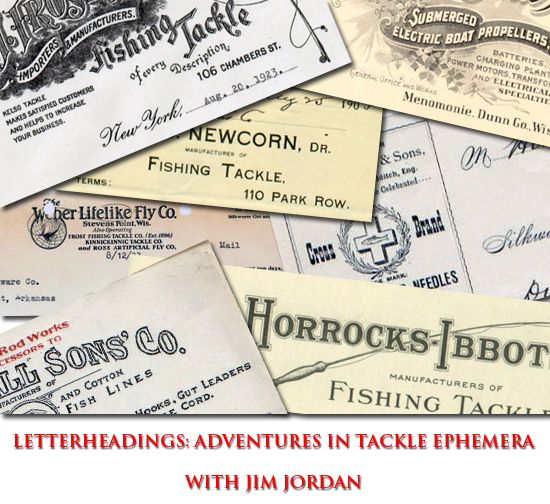
This weeks feature, a former piece from my collection will give contrast to last weeks simple unillustrated Peckinpaugh letterhead. It clearly indicates that Peckinpaugh did not confine all his correspondence to such a plain presentation. Aside from his standard letterhead, Peck also used what he referred to as a folder where the cover doubled as a letterhead. These folders were illustrated catalogs made up of several pages of Pecks baits, along with some hints for anglers. The folder covers were bordered along the left side with illustrations of some Peck's baits and a boy float fishing from a dock with his dog as a companion.The vast majority of the cover was left blank in order for the company to use for correspondence. Printed at the bottom is one of my all time favorite slogans from any tackle company "Peck's Insurance Against Fishless Days."

This communication is to the same addressee as last weeks feature, Mr. L.G. Hayes. This is a response to a letter from Hayes telling Peck of his recent success with Pecks Tandem Fly on the Meramec river. Peck informed L.G. that the flies he had requested would be shipped under a separate cover. Peckinpaugh requested when Hayes made future orders of weighted casting flies that he specify the colors he desired. Peckinpaugh concludes by telling Hayes that nearby streams have been very low and fishing was hardly worthwhile. I really like the way Peck incorporated both catalog and letterhead with these. I have only seen this style catalog/folder where the cover doubles as a letterhead dated for the years 1929 and 1930.This 1930 example featured eight pages, with the cover being considered page one.
Best Regards,
-- Jim Jordan



















